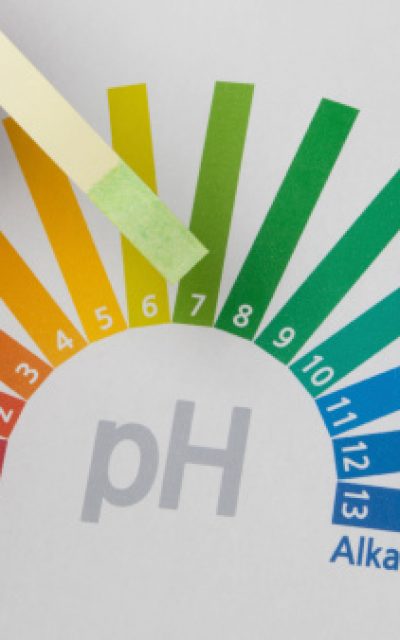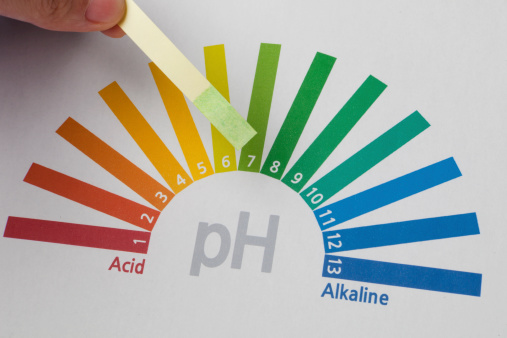
All You Need to Know About Swimming Pool pH
There’s no better feeling than diving into a crystal-clear, clean swimming pool. It’s refreshing for both the mind and the body, but if you own, or have ever owned, a swimming pool, then you know it doesn’t come without a little effort.
Keeping your pool in top condition, with sparkling water and a good chemical balance, means a safe and clean swim. But did you know that keeping on top of your pool’s pH can also benefit the delicate components that keep it working?
This month at Morehead Pools, we want to talk to you about swimming pool pH, including what to do when it’s either too high or too low.
But first, let’s circle back and talk in a little more detail about what pH actually is and some of the other reasons it’s so important.

What is pH and why is it important for your pool?
The pH level of water is a chemical measure for its acidity and stands for ‘potential hydrogen’. The level ranges on a scale from 0 to 14, with any pH reading below 7 showing that the water is acidic, while a reading of 8 and above indicates the water is alkaline.
The ideal pool water pH level is between 7.4 and 7.6 for a comfortable swim — so you can see, it’s a delicate balancing act.
Here’s why that balance is important: the chlorine you use to keep your pool water clean won’t work if the pH level isn’t in balance.
Chlorine is integral to any pool. It kills bacteria and algae, thereby protecting you from picking up diseases and illnesses while swimming. Chlorine also helps to neutralize any dirt and debris that enters the pool, whether it’s tracked in by bodies or swept in by the wind.
What happens if my pool pH is too high?
High pH levels irritate the eyes and skin. This is due to alkaline water impacting the natural defenses of your skin. It’s not pleasant and should be addressed quickly.
A high-alkaline pool will also not help when it comes to chlorine and other chemicals you use to keep the pool clean. You’ll start to notice your water becoming cloudy, with scaling appearing around your pool due to the calcium hardness of the water.
What causes high pH?
Several different things can cause the pH level in your pool to rise.
The first is simply people using the pool, since they’ll swim and splash, breaking up the CO2 and bringing in natural pollutants. But it can also be due to other chemicals you’re using, with certain chlorine products bringing the level up.
Even a rise in the temperature of the pool itself can create a rise in alkalinity, whether that’s the sunshine warming the water or your heater.
What happens if my pool pH is too low?
Low pH can also irritate the eyes and the skin. This is because acidic water begins to sting, removing any natural oils on your skin and hair. As with high pH, low pH can also start to impact how effectively your chlorine and other chemicals work.
Other things you can expect with low pool pH levels include the corroding of any metal elements in your pool, such as steps and handrails, along with the liner of your pool beginning to wrinkle.
What causes low pH?
Most pool water left to sit will begin to lower in pH level simply because the carbon dioxide all around us will dissolve into it. Rainwater can bring your pool’s pH level down too, as it typically has a low pH level.
You might also see your pool water become more acidic when using cleaning products such as chlorine gas, or because of sanitizers such as bromine.

How to measure & maintain pool pH levels
The good news is that you can easily measure the pH level of your pool and work to get it back into the safe zone. This will put your pool back in a comfortable place, protecting both swimmers and your pool itself.
Here’s how to do it:
- Use test strips and follow instructions. The first thing you need to do is establish whether your pH level has slipped outside of what is recommended, and in which direction.
Remember, anything lower than a 7.4 (7.2 at an extreme) means your pool water is becoming too acidic, which will mean you need:
- pH increasers (bases) – these products are usually some form of soda ash (sodium carbonate), which will raise the alkalinity of your pool quickly.
If, on the other hand, your pool water’s pH level has gotten above 7.6 (7.8 at an extreme), then it’s too alkaline, and requires:
- pH decreasers (acids) – this will usually be either muriatic acid or sodium bisulfate.
We always recommend using caution and following the manufacturer’s guidelines if you’re attempting to use chemicals in your pool.
At Morehead Pools, we know that maintaining a perfect pool can be tricky, which is why we offer our professional assistance to homeowners throughout Shreveport and Bossier City. Not only do our swimming pool maintenance programs help to keep your pool and spa at the right pH level, but they also take the burden of cleaning your pool off your hands. That means you can let us do all the hard work while you enjoy a pristine pool all year round.
Contact us today to discuss weekly or bi-weekly maintenance schedules for your swimming pool, including water chemistry testing and balancing.
